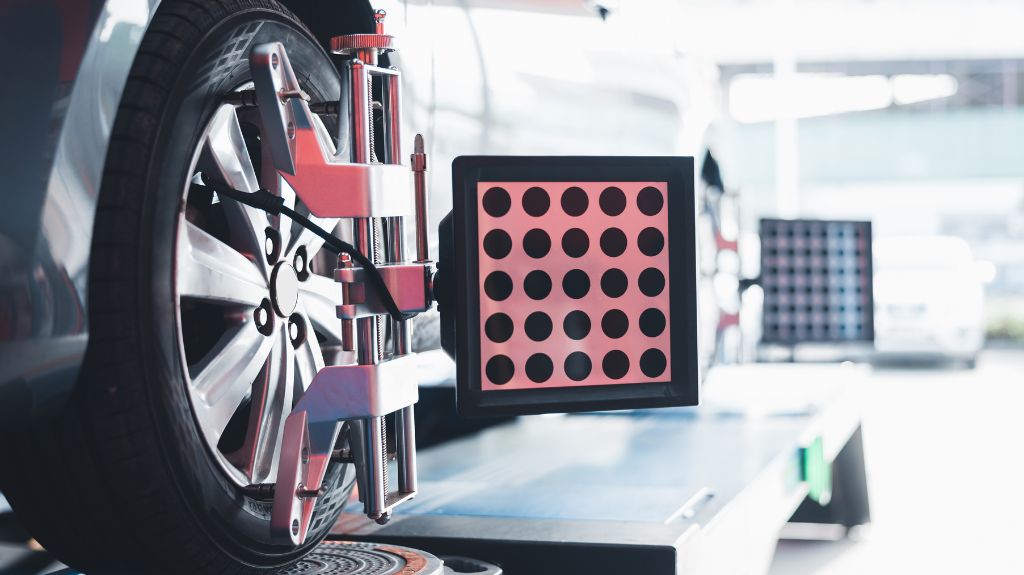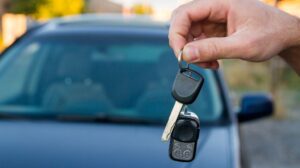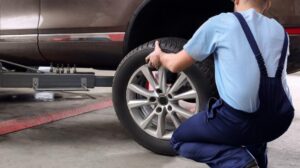Introduction to Car Pulling Issues
Experiencing your car pulling to one side while driving is a common and often frustrating issue for many vehicle owners. This problem can significantly affect the driving experience, leading to discomfort and potential safety hazards. When a car pulls to one side, it requires constant correction from the driver, which can be both tiring and distracting, particularly during long journeys. Moreover, such an issue can indicate underlying problems that, if left unaddressed, might lead to more severe vehicle damage and costly repairs.
Understanding the various causes of this problem is crucial for timely diagnosis and resolution. Several factors can contribute to a car pulling to one side, including misaligned wheels, uneven tire pressure, worn suspension components, and brake issues. Each of these elements plays a vital role in ensuring the smooth and stable operation of your vehicle. Misaligned wheels can alter your car’s trajectory, while uneven tire pressure affects the balance and handling. Worn suspension components can compromise the vehicle’s stability, and brake issues can cause uneven braking forces, all of which can lead to the car pulling to one side.
This blog post aims to delve into these potential causes in detail, providing you with the knowledge needed to identify and address the issue effectively. Additionally, we will introduce various products that can aid in diagnosing and resolving these problems, ensuring your vehicle remains safe and comfortable to drive. By understanding the root causes and taking appropriate measures, you can maintain your car’s performance and safety, ultimately enhancing your overall driving experience.
Misaligned Wheels
One common reason your car may pull to one side while driving is misaligned wheels. Proper wheel alignment is crucial for maintaining optimal vehicle performance, tire longevity, and fuel efficiency. When wheels are not correctly aligned, it can lead to uneven tire wear, reduced fuel economy, and compromised handling, which can make driving both uncomfortable and unsafe.
Wheel alignment refers to the adjustment of a vehicle’s suspension system—the system that connects a vehicle to its wheels. The primary angles that are adjusted during an alignment are camber, caster, and toe. Each of these angles plays a vital role in the vehicle’s stability and steering response. Misalignment can occur gradually due to everyday driving conditions or abruptly due to hitting a pothole or curb.
Common signs of misaligned wheels include uneven tire wear, the steering wheel being off-center when driving straight, and the vehicle pulling to one side. If you notice any of these symptoms, it’s advisable to have your alignment checked by a professional technician. Regular alignment checks are a preventative measure to ensure that minor issues do not escalate into more significant problems that could compromise your safety.
Diagnosing misalignment typically involves a visual inspection and the use of specialized equipment to measure the wheel angles. If misalignment is detected, a technician will make the necessary adjustments to bring the wheels back into the manufacturer’s specified alignment settings.
To learn more about wheel alignment and how to correct misalignment issues, refer to AutoAdvisor’s Wheel Alignment Guide. This comprehensive resource provides detailed information and tips to help you understand the importance of proper wheel alignment and take appropriate action to ensure your vehicle’s optimal performance.
Uneven Tire Pressure and Worn Suspension Components
One of the most common reasons for a car to pull to one side while driving is uneven tire pressure. When the pressure in the tires is not balanced, it can create an uneven distribution of weight across the vehicle, resulting in an imbalance that affects handling and stability. For instance, if the pressure in one tire is significantly lower than in the others, the car may veer towards the side of the underinflated tire. Ensuring that all tires are inflated to the manufacturer’s recommended levels is crucial. Regularly checking tire pressure, at least once a month, can help prevent this issue. Utilize tools such as the AutoAdvisor’s Tire Pressure Monitoring System to maintain optimal tire conditions and improve overall vehicle safety.
In addition to tire pressure, worn suspension components can also cause a car to pull to one side. The suspension system plays a vital role in maintaining vehicle stability and ensuring a smooth ride. Components such as ball joints, tie rods, and control arms are designed to keep the wheels aligned and absorb shocks from the road. Over time, these parts can wear out or become damaged, leading to misalignment and instability. When suspension components are compromised, the vehicle may pull to one side, especially when driving over uneven surfaces or during braking. To address this, it is important to have the suspension system inspected regularly by a professional mechanic. Replacing worn or damaged parts promptly can prevent further complications and enhance driving safety.
By paying attention to both tire pressure and suspension components, drivers can significantly reduce the risk of their vehicle pulling to one side. Regular maintenance and timely repairs are key to ensuring a stable and safe driving experience.
Brake Issues
Brake problems are a common cause of a car pulling to one side while driving. This phenomenon often results from uneven brake pad wear or sticking calipers, which can create an imbalance in the braking system. When you apply the brakes, each wheel should receive an equal amount of braking force to ensure the vehicle stays on a straight path. However, if one brake pad is more worn than the other or a caliper is sticking, the corresponding wheel will experience less braking force, causing the car to pull towards the side with the stronger braking force.
The mechanics of braking involve converting kinetic energy into heat through friction, which slows down the vehicle. Brake pads press against the rotors to create this friction. Over time, brake pads wear down, and if not replaced uniformly, they can lead to uneven stopping power. Similarly, calipers, which house the brake pads, can sometimes stick due to corrosion or debris. A sticking caliper can cause continuous contact between the pad and rotor, leading to uneven wear and a pull to one side when braking.
Diagnosing brake issues requires a thorough inspection of the brake components. Look for signs of uneven wear on the brake pads and check for any sticking or seized calipers. It’s crucial to address these problems promptly to ensure safe driving conditions. Regular brake maintenance, including timely replacement of brake pads and calipers, can prevent these issues from arising. Additionally, consider consulting with a professional mechanic for an accurate brake assessment, or use diagnostic tools available through AutoAdvisor to get a detailed analysis of your braking system.
By understanding the mechanics of braking and the potential for imbalances, you can take proactive measures to maintain your vehicle’s braking system. Ensuring that all components are in good working order will not only prevent your car from pulling to one side but also enhance overall driving safety.




